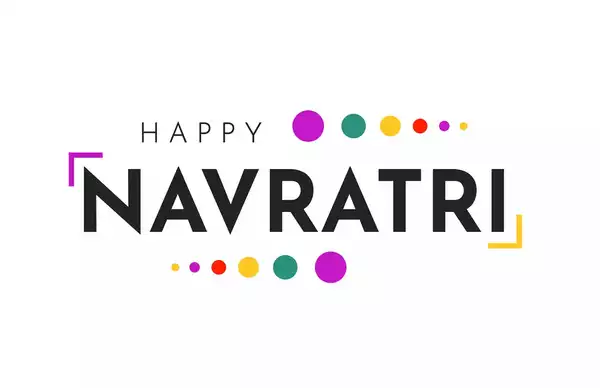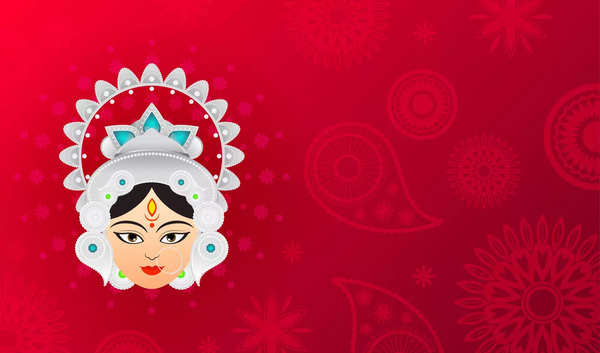It’s that time of year again when we gather to celebrate goddess durga, Navratri One of the most celebrated festivals in India. It celebrates the rich colors of happiness, and is dedicated to the worship of Goddess Durga. The enthusiasm and devotion with which it is celebrated every year comes together on the last day of Dussehra. The festival lasts for nine nights, each night being different from the others in celebration of a different form of the goddess, and each day having its own significance and its own colour. Shardiya Navratri Starts from October 10 to October 18 in the year 2024. Below is the detailed color scheme with the meanings of the colors Navratri 2024Have a lovely time by celebrating this festival with style and love.

Day 1: Yellow
First day of Navratri Shailputri, Goddess of Mountains Yellow color is synonymous with happiness, brightness and positivity. It is something that everyone loves to present or wear on the first day of Navratri – an encouragement of a spirit that bestows happiness and wisdom. It represents the beginning of the festival and good new energy.
Tips to celebrate: On the second day, wear all your clothes in yellow. Be it a traditional saree or lehenga, even casual wear, take this as a color to wear. Decorate the inside of your home with yellow flowers for a vibrant atmosphere.
Day 2: Green
The second day is the day of worship of Brahmachavarini. It represents knowledge and intelligence. Green color symbolizes nature, fertility and prosperity. Hence, green color brightens your aura and welcomes good spirits for success in life.
How to celebrate it: You can do anything that has green color on the body. You can decorate your home with plants and greenery to show growth and rebirth. It would also be good to wear green bangles or dupatta.
Day 3: Grey
While performing the third day puja on Sunday, devotees worship Chandraghanta who is known as the goddess of beauty and courage. Gray color is neutral. It is a strong color where it reflects power, strength and stability which feels like the powerful fiery essence of Chandraghanta.
Some tips to celebrate, wear something very brown. Gray kurta or saree would be very good. The gray color is made up of pillar candles or cushions that emit a subtle balancing atmosphere all around.

Day 4: Orange
Kushmanda is a celebration of the fourth day and represents energy and creativity. Orange is a bright and full of energy color. It represents excitement and warmth, which is truly apt for the festive season.
Wear anything orange or add some orange accessories: like bright bangles or brightly colored bangles. Decorate your home with marigold flowers, or some kind of orange color-themed decor, which will enhance the festive feeling.
Day 5: White
The 5th day is dedicated to Skandamata, who is the mother of Kartikeya. White color symbolizes purity and peace and is related to harmony. It represents the qualities of a good mother and calls for peace during the festival.
Festive Ideas: Wear an ethereal white saree or dress as a symbol of purity. Light white candles in your home. This will make the surrounding environment more soothing and conducive to peace.
Day 6: Red
On the sixth day, devotees worship Katyayani, who is a symbol of strength and bravery. Red is the color of power, passion and love. It is believed that wearing red clothes on this day brings the energetic power of the Goddess along with her armour.
Tips for celebration: Bright red clothes will hit the mark. One can also use red flowers, such as roses or hibiscus, for decoration and plating; The theme here is of power and devotion.
Day 7: Royal Blue
Mahagauri is the seventh day of the week and is the goddess of purity and peace. Royal blue is a color that reflects depth, trust and peace. This is in keeping with Mahagauri’s nature, which promotes peace and balance.
Ideas to celebrate: Add royal blue to your wardrobe with classy items that symbolize innocence. Decorate your space with blue, like a tablecloth or even a wall hanging, to make it feel soothing and soft.
Day 8: Pink
The eighth day is dedicated to Siddhidatri who bestows spiritual powers and knowledge. Pink is the color of love with love and affection. Wearing anything pink on this day increases feelings of love and positivity as it is the nurturing spirit of the Goddess.
How to celebrate: Wear light pink clothes or wear pink accessories. Use pink flowers in your home decor so that it attracts people with warmth.
Pooja Banerjee on playing Goddess Lakshmi, balancing motherhood, preparing for Durga Puja and more
Day 9: Lavender
It is the day of Goddess Durga, who is a symbol of power and strength. It also symbolizes spirituality, luxury and ambition. It is the color of appeal to connect with divine powers and reflects the depth of the soul.
Celebrate the event by wearing a vibrant purple dress or use it as decoration for your outfits. Use purple lights or purple decorations in your home to celebrate the presence of the Almighty Goddess.

Importance of colors of Navratri
Colors are an integral part of the festival, with each color reflecting a different aspect of the divine feminine energy. Colorful wearable items symbolize an expression of reverence for the goddess energy and a prayer for her blessings in the qualities depicted by each color. The rich tapestry is representative of the vibrancy that enhances the celebration and enables one to bond better with the spirit behind the festival.
Navratri is always a festival filled with fun, pure devotion and a feeling of establishing connection with the divine powers. Incorporating those special colors for every day in attire and decoration can give a better flavor to your experience of this beautiful festival. Through traditional garments or simple decorative objects, each color invites one to contemplate the qualities of the goddess while encouraging better knowledge of oneself and the world.
As we await the onset of Navratri in 2024, let the vibrant colors bring vibrancy and joy, positivity and devotion to your life. Live the spirit of this festival, pay respect to the Goddess and take all these colors with you as you step into this kaleidoscope of faith and celebration!
- What is the duration of Navratri?
Shardiya Navratri is a nine-night festival that falls in the lunar month of Ashwin between mid-September and mid-October. It culminates with Dussehra, or Vijayadashami, as a celebration of Lord Rama’s victory over the demon king Ravana. - What are the names of the goddesses worshiped in this period?
Navratri is one of the most important festivals dedicated to the worship of various goddess forms. These are the nine forms of Durga or Navadurga. These include Shailputri, Brahmacharini, Chandraghanta, Kushmanda, Skandamata, Katyayani, Kalaratri, Mahagauri and Siddhidatri. - What are the cultural variations?
This festival is celebrated with unique customs in different regions across India. For example, Garba and Dandiya dances are organized in Gujarat while elaborate Durga Puja celebrations are organized in West Bengal. - What is Navratri fast?
During the nine days, most devotees fast and consume very selected foods, including fruits and specific grains. Prayers, bhajans and kirtans are a part of it, but elaborate puja for Goddess Durga is also included. - What is the symbolism of color?
Each day of Navratri is associated with a specific colour, signifying a specific aspect of the Goddess. Devotees performing puja in such colorful attire are meant to wear clothes symbolizing various qualities and virtues, thereby adding to the festive spirit.

















